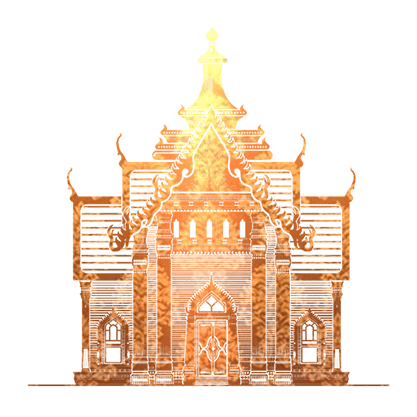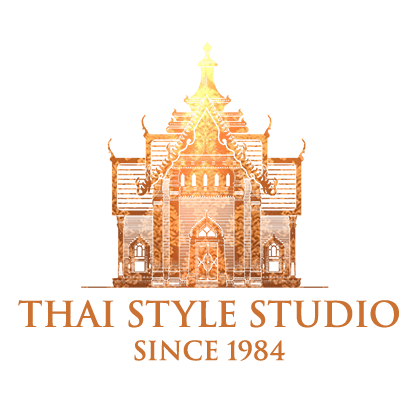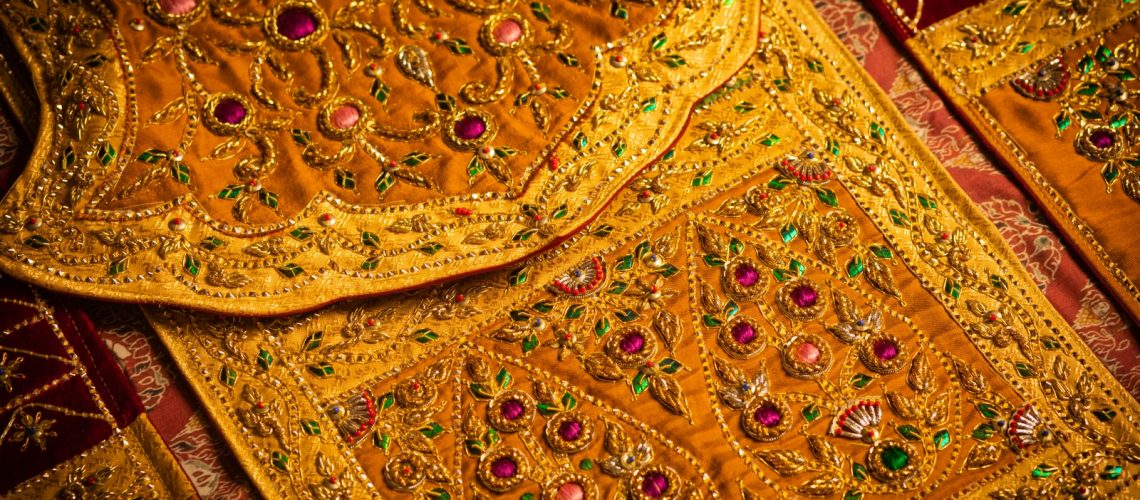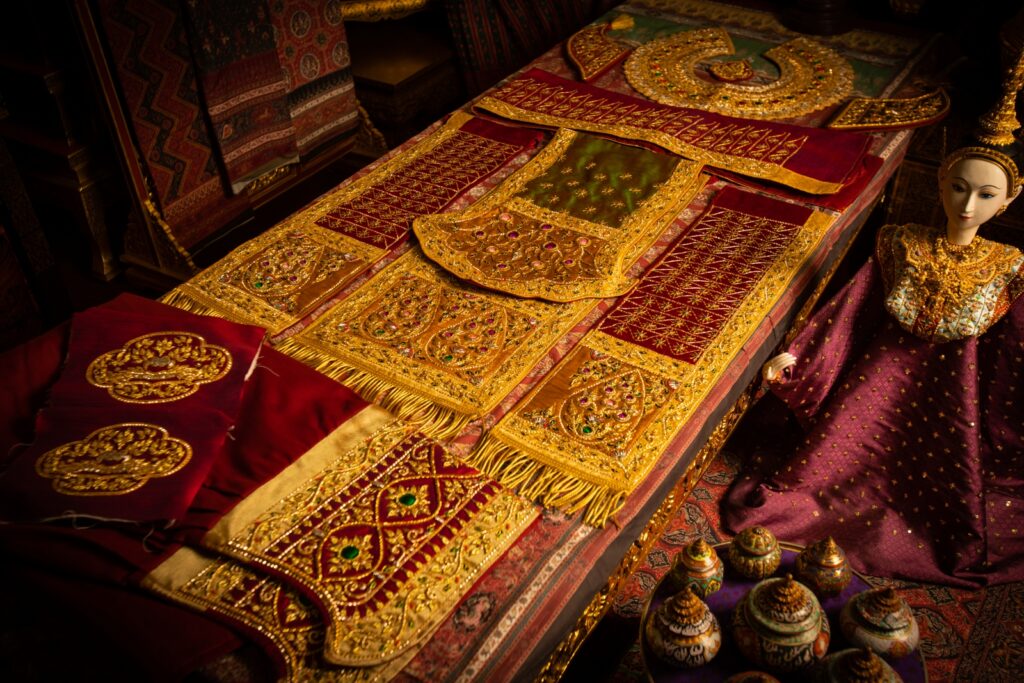
Since the Ayutthaya period and into the Rattanakosin era, the use of textiles has been prevalent among the monarchy, including the king, queen, members of the royal family, and high-ranking nobles. These fabrics were categorized based on their purpose, such as garments like the Khrui (robe or royal gown) and Pha Song Sapak (shoulder cloth). They also served as royal regalia, accessories denoting rank, and ceremonial fabrics, including floor coverings and offerings for religious rituals like Phuttha Bucha (offerings to Buddha).
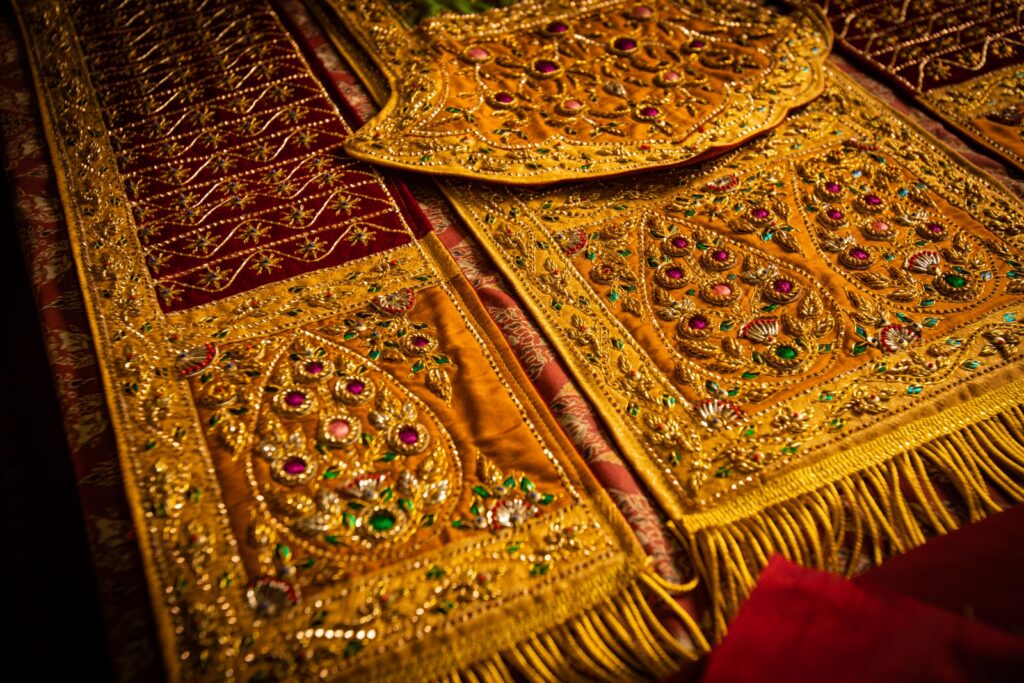
The royal court utilized various forms of embroidered fabrics, including those crafted with ancient embroidery techniques to enhance their beauty and value. Examples include silk embroidery, Laeng embroidery, and Hak Thong Kwang embroidery. Additionally, preembroidered fabrics were often imported in bulk from abroad for tailoring into garments. The materials used in royal embroidery featured luxurious elements such as silver and gold threads, sequins, colored silk, Laeng, Hollow threads and even jewel beetle wings (Buprestidae), adding a distinctive brilliance to the designs
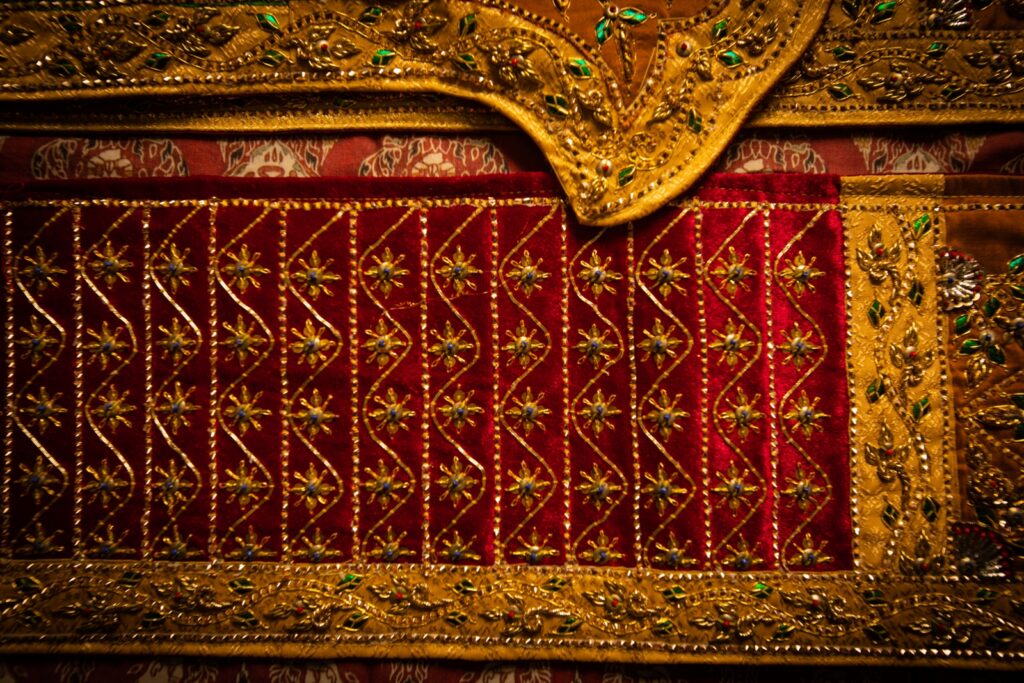
Embroidery is a delicate art that demands skill, precision, and considerable time to perfect. In the Siamese royal court, the tradition of embroidery craftsmanship has been preserved since the Ayutthaya period, overseen by the Royal Costume Department, known as “Chang Sana.”
A Chang Sana is a highly skilled artisan specializing in working with fabric, paper, and leather. Their craft involves various techniques, including sewing, embroidery, knitting, weaving, and patching. These artisans create exquisite pieces by carefully cutting, stitching, and embroidering materials to shape intricate designs. Beyond producing new works, Chang Sana also restore and enhance older items, applying their expertise across textiles, leather, and paper through the same meticulous processes of sewing, embroidering, knitting, weaving, and patching
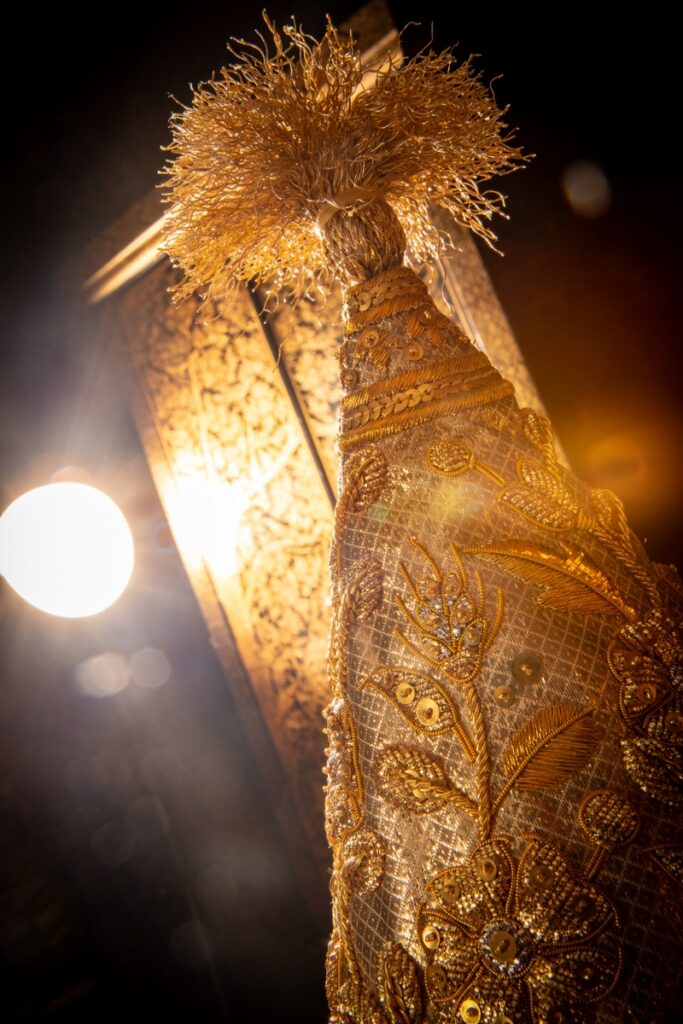
During the Rattanakosin period, under the reign of King Rama I, a revision of the Three Seals Law was ordered, reorganizing “civilian positions” and “provincial military positions” into new categories. As part of this restructuring, craftsmen were grouped into specialized departments known as Krom Chang Sib Moo (Department of Ten Essentials of Traditional Craftsmanship).
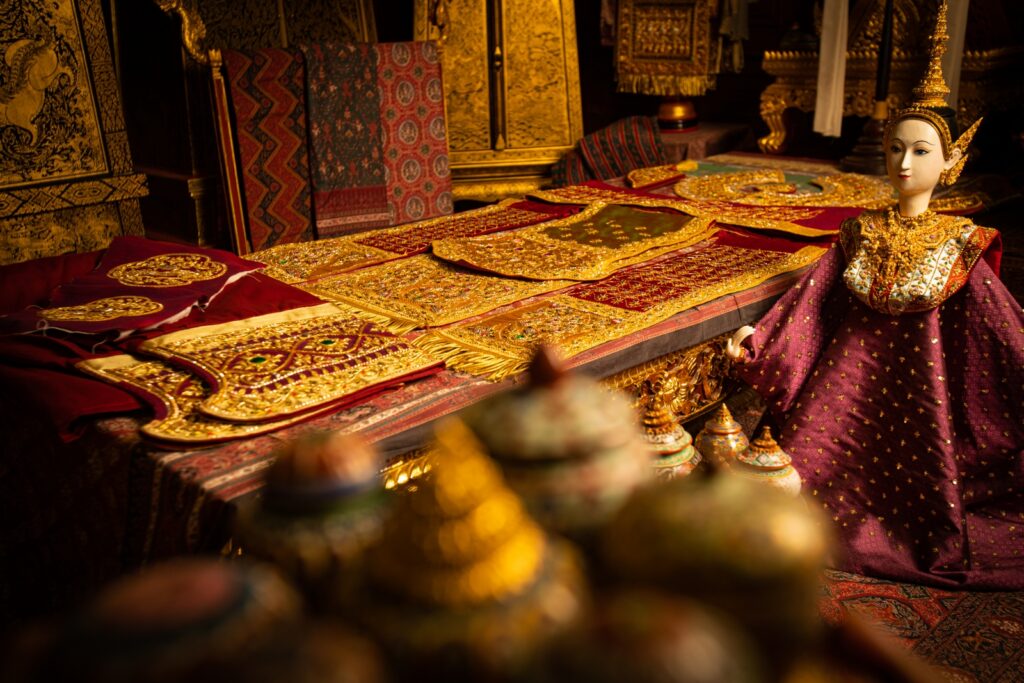
During the reign of King Mongkut (Rama IV) (1868-1910), engineering and craftsmanship were organized into various departments, including Chang Sana Thai. Later, King Chulalongkorn (Rama V) restructured the administration, assigning these groups of artisans and technicians directly to the civil service, separating them from military oversight, which had been the traditional practice in earlier periods.
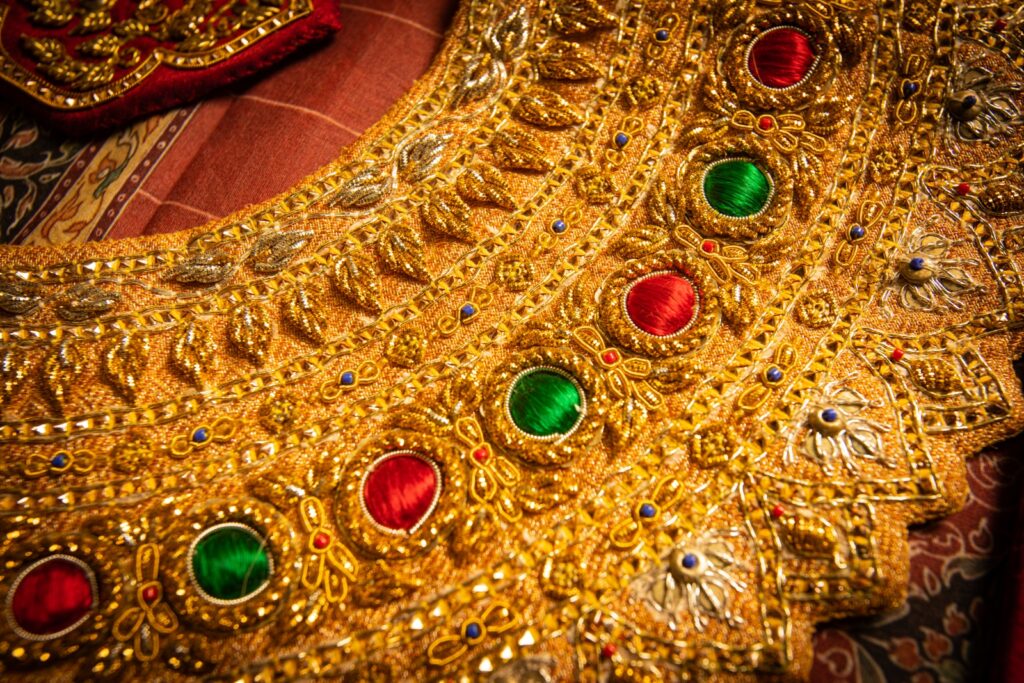
In the Royal Bathing Ceremony Records of Maha Vajirunhis, Crown Prince of Siam, during the reign of King Rama V, it is noted that nobles from various departments participated in the “Royal Procession of Carrying Arms Back Down” as part of the 1886 tradition, with the Thai-Chinese Department Chang Sana being among them. During the reign of King Rama VI (1910-1925), the Royal Craftsman Page Department was dissolved due to the economic depression caused by World War I (1914-1918). The responsibilities of the Ten Essentials of Traditional Craftsmanship were initially transferred to the Department of Entertainment and later reassigned to the Fine Arts Department upon its establishment.
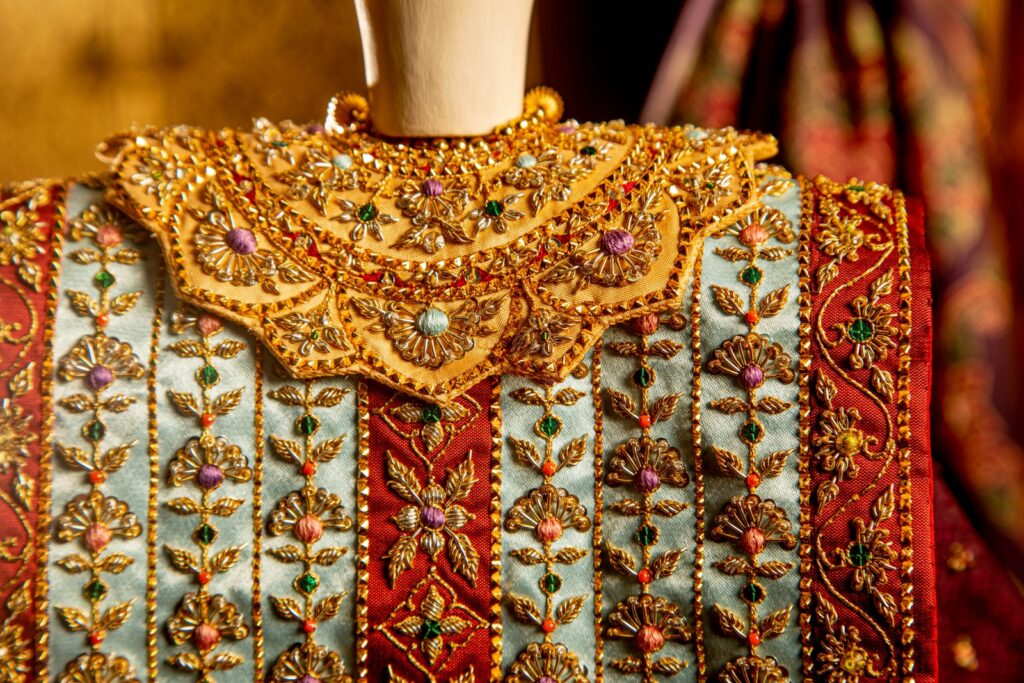
Chang Sana refers to a type of artisan within the Ten Essentials of Traditional Craftsmanship, specializing in various fabric works to fulfill royal requests, including sewing, embroidering, and patching textiles. In addition to fabric work, they also create leather goods, such as saddles, knife sheaths, belts, and straps, as well as military uniforms. Chang Sana is categorized into two groups: the Thai artisans known as “Thai Chang Sana” and the Chinese artisans referred to as “Chinese Chang Sana.
Chang Sana comprises both creation and repair teams, as objects may need modifications or repairs over time. They adapt clothing, bags, shoes, and other items made from fabrics, leather, and paper, as well as boats. Artisans in this field must have a deep understanding of the work processes and the materials involved, enabling them to select appropriate materials for each project, such as the silk’s color or the characteristics of various threads. Craftsmen need to possess specialized skills and knowledge of techniques, as well as the ability to troubleshoot challenges that arise during their work. Each embroidery technique varies depending on the material, requiring different approaches to create intricate patterns.
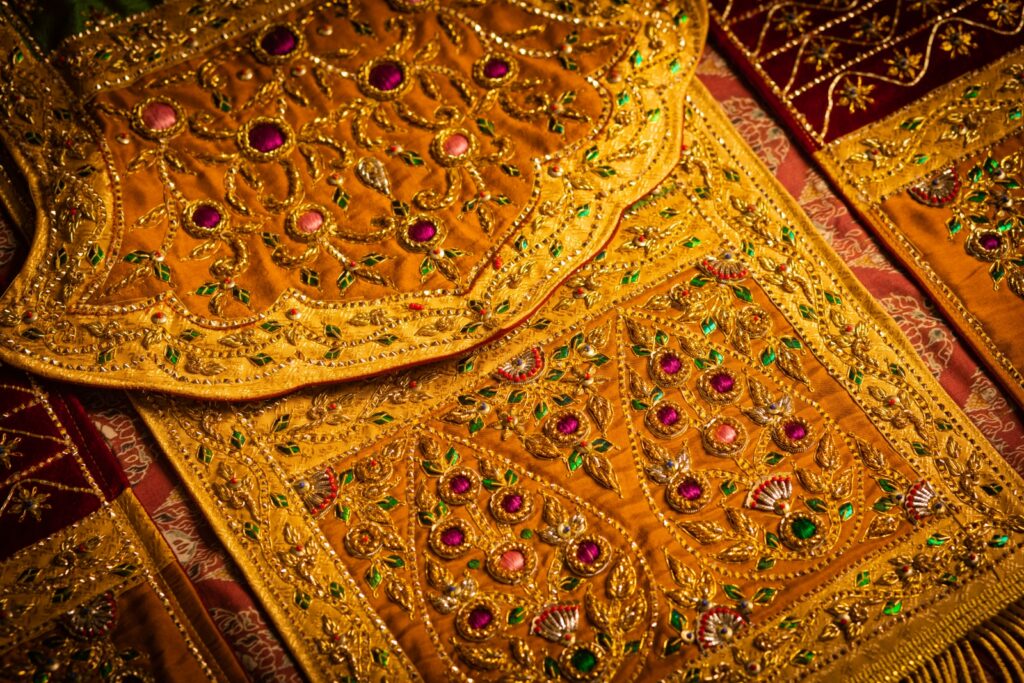
A brief overview of Chang Sana’s production methods
- Tailoring involves shaping figures into forms, embroidering patterns, and assembling
them into military uniforms and Royal Page uniforms, including hats and other accessories.
2. The process of creating patterns through embroidery involves using various materials,
including threads, sequins, silk, metallic thread, and embossed thread.
Many types of embroidery such as;
Solid embroidery is the technique of applying materials like embroidery thread to fabric to form a desired pattern. This pattern is typically narrow; to achieve a beautiful embossed effect, the embroidery must be done first.
Soi embroidery is an ancient Thai technique characterized by dense up-and-down stitching, alternating short and long threads, and gradient shading throughout the pattern until the entire area is filled. This form of embroidery demands meticulous care and attention to detail to ensure that the colors and shading replicate the original painting accurately
Sequin (Leum) embroidery involves using circular pieces of silver and gold metal,
each with a central hole, to create patterns on fabric.
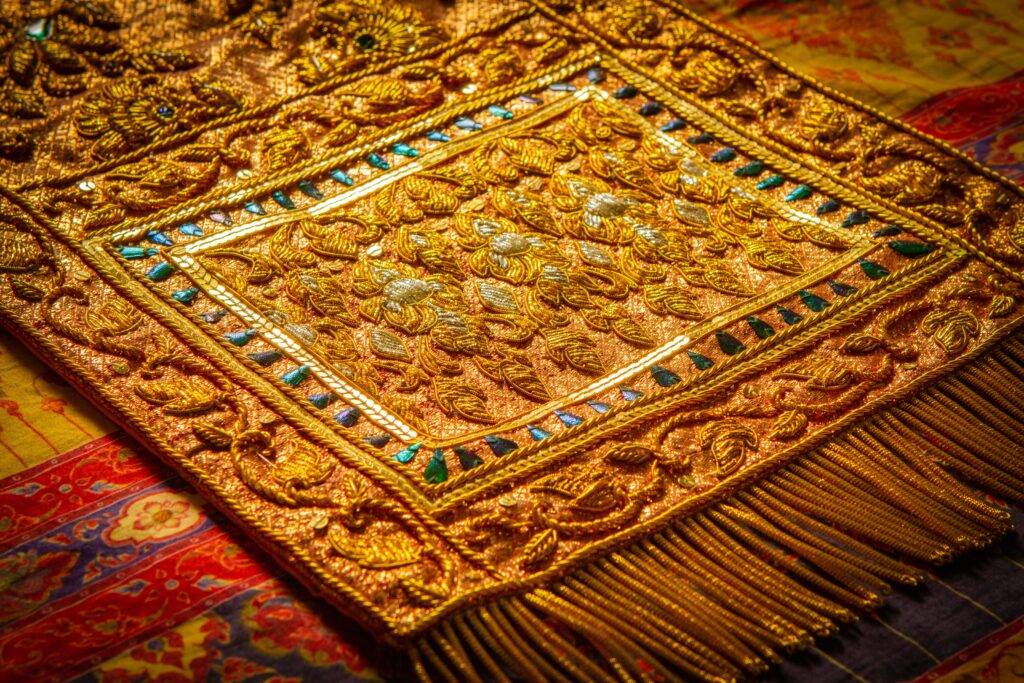
“Embroidery with metal thread, shiny thread (Din Man), and matte thread (Din Dan)” features a round line and consists of a small, flexible wire available in both gold and silver colors, used to create intricate patterns on fabric. To embroider, the thread is cut into pieces of appropriate length for the design. The needle is threaded through the gold, shiny, or matte thread and inserted in the opposite direction to secure the pattern. When using gold thread to define the design, it is fixed at intervals according to the pattern model to maintain the correct spacing.
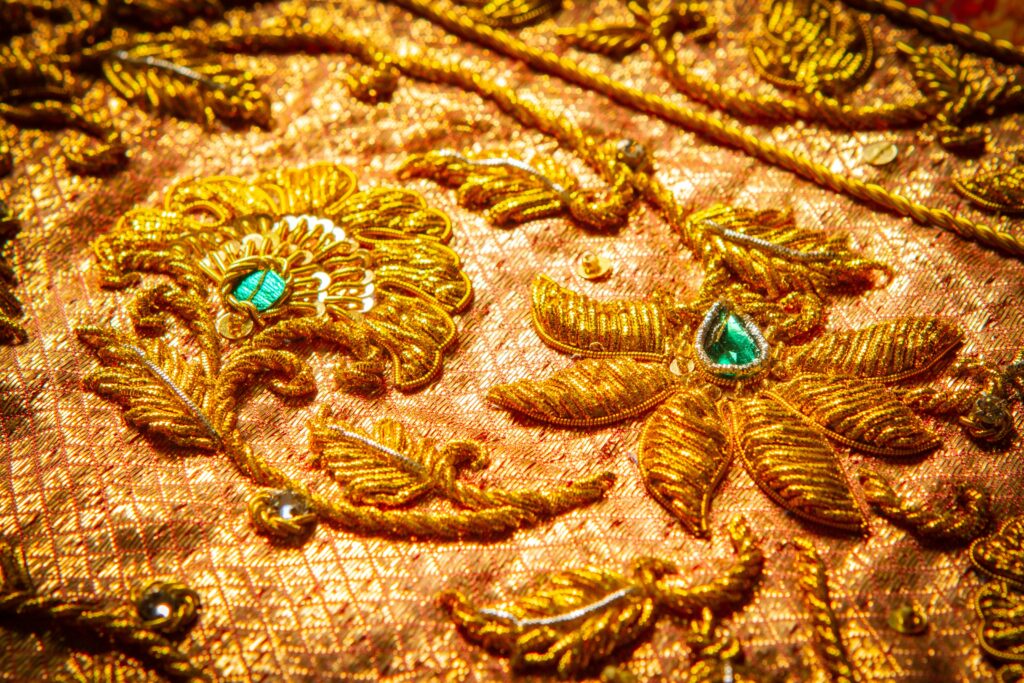
Embroidery with hollow metal thread (Din Prong) features a square line that is raised and flexible, with both silver and gold options available. This type of thread is used to create patterns and may be supported by thread or joints beneath it. When embroidering, the hollow metal thread is cut into pieces slightly longer than the design for proper fitting. The needle is threaded with the hollow metal thread and sewn down in the opposite direction until the pattern is fully completed.
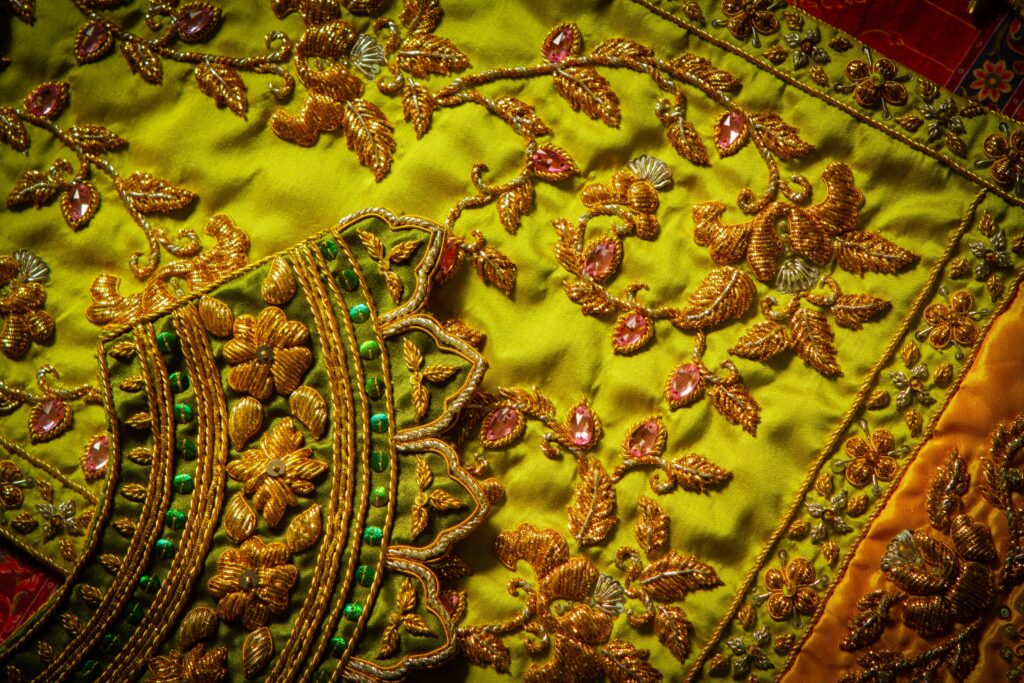
Laeng embroidery involves the use of small, flat pieces of gold and silver metal that are rolled into thin strips. These strips are incorporated into various types of embroidery to enhance their shine and beauty. Both silver and gold options are available, allowing artisans to choose the most suitable strip for their specific project
Hak Thong Kwang embroidery involves using threads to secure gold silk threads at both the head and tail of the design, while folding them back and forth across the pattern to create the desired design. Although the pattern may be supported by additional threads, the gold silk threads are not inserted into the fabric; instead, they are held together by threads at the beginning and end only
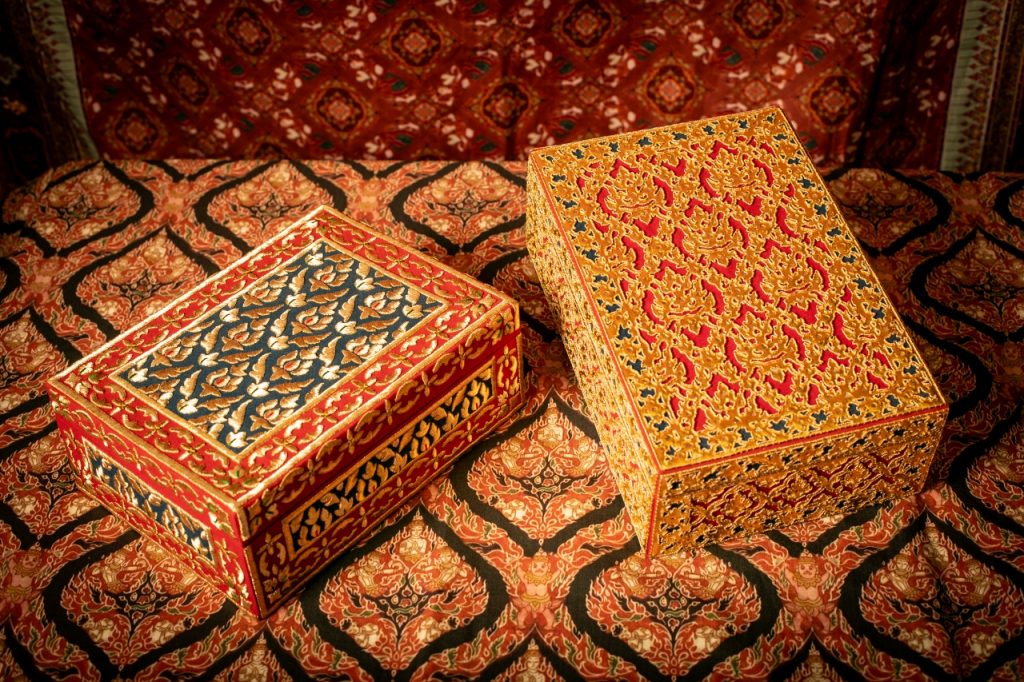
Krong Thong Knitting, also known as Ta Chun Knitting, is a technique that involves using small, open silver or gold threads, resembling a net. These threads are then embroidered with gold threads and sequins in various designs, such as Pha Song Sapak or the Khrui Royal Dress.
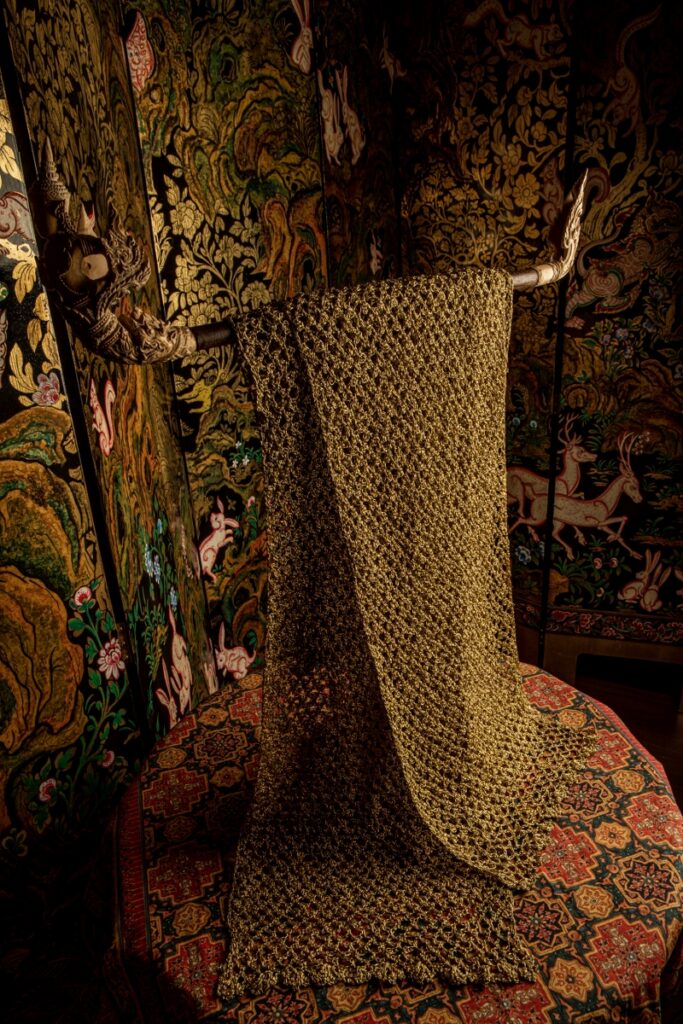
Interesting Facts: Metal thread embroidery utilizes precious metals in various shapes as the primary
material for stitching. These precious metals come in multiple forms and are referred to as follows:
- “Din” is a type of metal that is drawn into a line and then coiled into a circular shape, resembling spring wire. There are various types, including shiny din, matte din, and hollow din.
- “Laeng” is a metal that has been rolled into a flat strip, resembling the rattan used for weaving on a weaving machine.
- “Leum” is created by cutting strands to the desired length and then beating them into a flat circle, a convex shape like a lid, or a star shape with multiple points
- “Mhai Thong” is a metal that is rolled into small threads and then twisted together with silk or other threads.
Since Chang Sana craftsmanship is not widely practiced and its inheritance is challenging, the number of artisans skilled in this craft has significantly decreased and is facing extinction. This decline raises serious concerns about the future of this important traditional craftsmanship
ขอบคุณข้อมูลจากหนังสือ: ราชภูษิตาภรณ์สยาม
An author assistant Nonthawat Ningjaiyen
